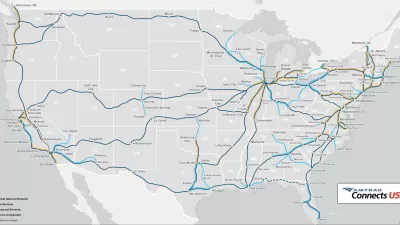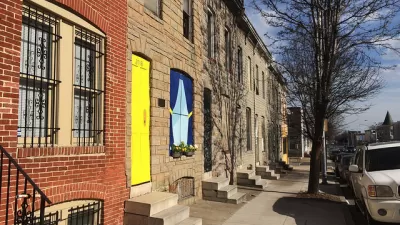Rice University Kinder Institute for Urban Research recently published "A Bottom-Up Infrastructure Strategy for American Renewal."

The Rice University Kinder Institute for Urban Research worked with former Secretary of the U.S. Department of Housing and Urban Development Henry Cisneros to publish a new report charting a path for "bottom-up" infrastructure investment for post-pandemic recovery.
The report surveys infrastructure priorities in 100 metropolitan areas and 134 cities across the country to 1,800 high-priority infrastructure projects (shown in an interactive map). Of that total, transportation, public facilities, water and wastewater, energy projects and communications projects appear most frequently on the list.
To meet the nation's infrastructure challenges (the result of decades of neglect preceding the pandemic), the report suggests a focus on three areas: post-pandemic infrastructure, climate resilience, and urban-rural connections.
An introductory article summarizes the "bottom-up" approach suggested in the report:
Too often U.S. infrastructure policy has taken a top-down approach, with the federal government dictating what will be built, based on inside-the-Beltway lobbying. But, in reality, the American economy is a network of regional and metropolitan economies. Cities and metropolitan areas are the true engines of American prosperity, and generate most of the economic output and most of the jobs. And they are economically connected to small towns and rural areas when they are part of the same mega-region. To meet the challenges listed above, the next American infrastructure strategy must include a market-based, bottom-up component that is responsive to the needs on the ground in cities, metros and regions.
The report suggests the local and regional leaders consult on the details of this infrastructure plan, so it's not suggesting a grassroots or community-led process sometimes connoted by the term "bottom-up."
FULL STORY: The US needs a bottom-up plan to fix its glaring infrastructure needs

Maui's Vacation Rental Debate Turns Ugly
Verbal attacks, misinformation campaigns and fistfights plague a high-stakes debate to convert thousands of vacation rentals into long-term housing.

Planetizen Federal Action Tracker
A weekly monitor of how Trump’s orders and actions are impacting planners and planning in America.

In Urban Planning, AI Prompting Could be the New Design Thinking
Creativity has long been key to great urban design. What if we see AI as our new creative partner?

King County Supportive Housing Program Offers Hope for Unhoused Residents
The county is taking a ‘Housing First’ approach that prioritizes getting people into housing, then offering wraparound supportive services.

Researchers Use AI to Get Clearer Picture of US Housing
Analysts are using artificial intelligence to supercharge their research by allowing them to comb through data faster. Though these AI tools can be error prone, they save time and housing researchers are optimistic about the future.

Making Shared Micromobility More Inclusive
Cities and shared mobility system operators can do more to include people with disabilities in planning and operations, per a new report.
Urban Design for Planners 1: Software Tools
This six-course series explores essential urban design concepts using open source software and equips planners with the tools they need to participate fully in the urban design process.
Planning for Universal Design
Learn the tools for implementing Universal Design in planning regulations.
planning NEXT
Appalachian Highlands Housing Partners
Gallatin County Department of Planning & Community Development
Mpact (founded as Rail~Volution)
City of Camden Redevelopment Agency
City of Astoria
City of Portland
City of Laramie





























